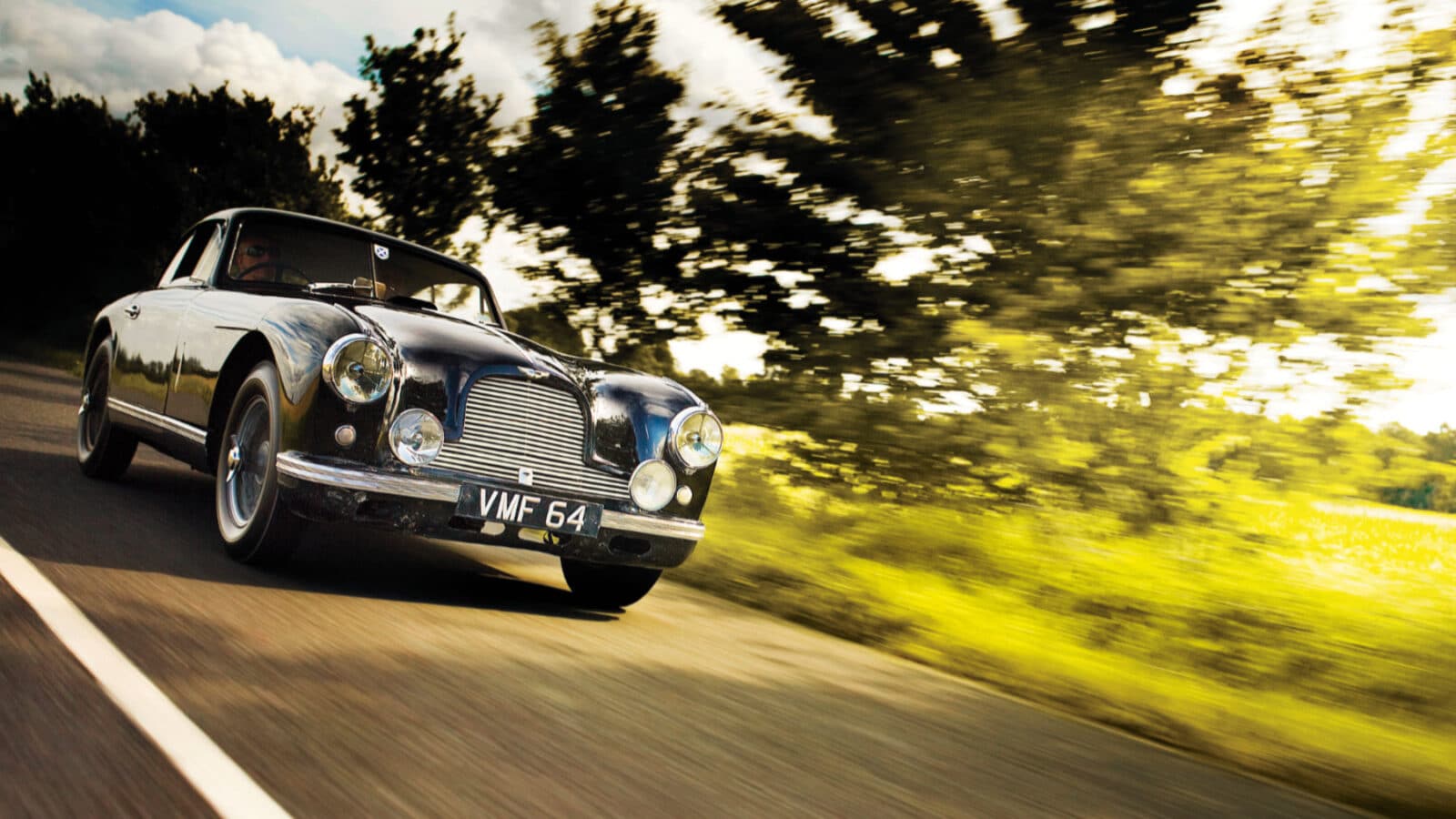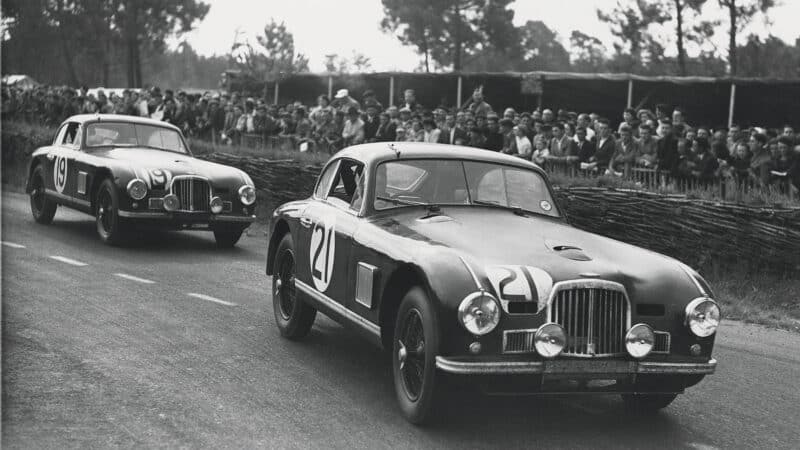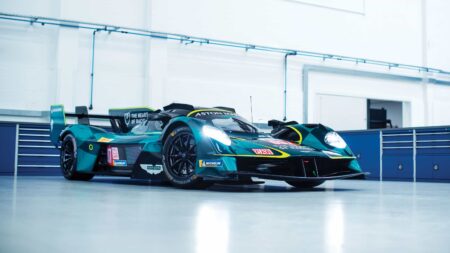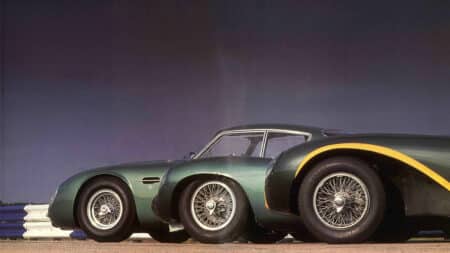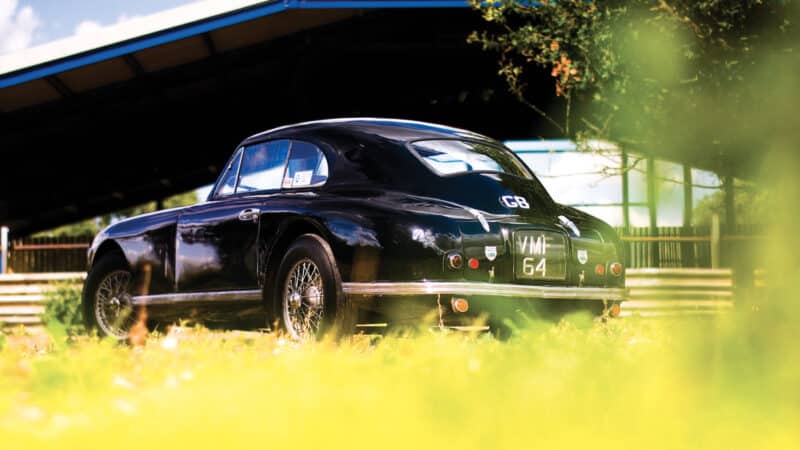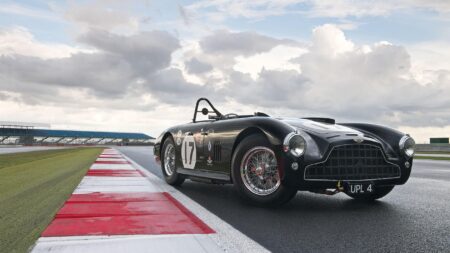By 1949 the Aston Martins looked vastly different from the previous year’s tourer-bodied racer. The DB2 featured a saloon body with a chassis slightly shorter than the DB1, its 2-litre engine wrapped in a more curvaceous body than the Spa ‘winner’. The matt green cars, understood to be prototypes for a 1950 production model, didn’t have a particularly satisfying debut at Le Mans, with two DNFs and a seventh-place finish. Only two cars were sent to the Belgian 24 Hours Touring Car Grand Prix – one running with Lagonda power, the other with an Aston four-cylinder – but here the DB2s fared better. The Lagonda-powered car driven by Johnson/Charles Brackenbury covered the third-highest distance, while the Aston-powered car, driven by Horsfall, finished fourth.
As planned the DB2 went into production, but designer Frank Feeley had only a few months to ready the first cars. So little time in fact that the car was built from full-scale drawings rather than small-scale models. VMF 64 (LML/50/8) was the second car off the production line – Aston had decided to take the first three cars to Le Mans in June. All three had 2580cc production engines with slightly larger-bore SUs and larger fuel tanks (32 gallons), producing 125bhp as opposed to 105bhp in the road cars. Tragedy struck when Jack Fairman crashed LML/50/9 en route to Le Mans, badly injuring his wife. The fact that he turned up at the circuit still wanting a drive only maddened the easily ruffled Wyer. Thompson, however, has fond memories of the boss: “He was exacting and had a wonderful dry sense of humour. He was meticulous in everything he did. A great man to race under.” Fairman didn’t drive for Aston again until 1959.
Thompson, the other driver for LML/50/9, was placed in the 1949 six-cylinder car alongside John Gordon, but on the eighth lap the crankshaft broke and Thompson never got to race. This was also the year that Brown himself tried to race one of his cars. “He had ambitions to drive in 1950, but the RAC turned him down,” recalls Thompson.
VMF 64 (or ‘64’ as Thompson calls it) rescued what had been looking like a dismal outing for the works team. The car, driven by George Abecassis (who would marry Brown’s daughter Angela in 1956) and Lance Macklin, was delayed briefly on the Sunday morning due to a sticking throttle but went on to finish fifth overall, first in the 3000cc class and, most surprisingly, tied in the Index of Performance with a Monopole Panhard. The last car (LML/50/7) came home a respectable sixth.
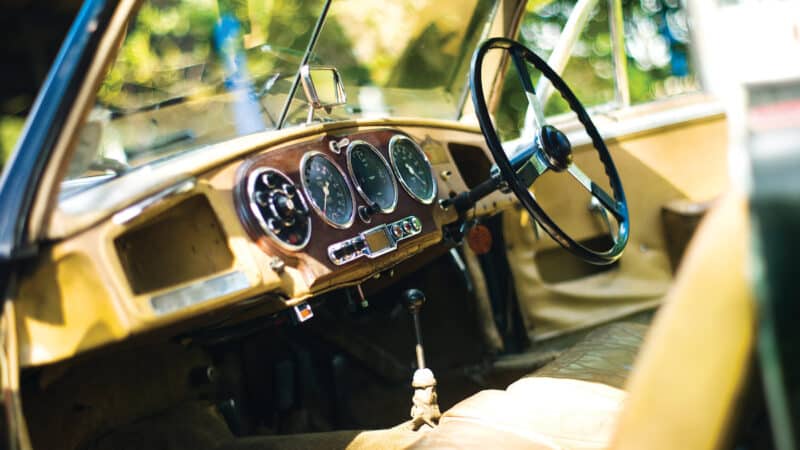
A £400,000 interior
When Macklin was injured, Wyer brought in Grand Prix star Raymond Sommer to drive ‘64’ in the Silverstone Production Sports Car race that August. Never one to go anything but flat out, the two-time Le Mans winner politely told Wyer – now employed full-time by Aston – that there was no point giving him signals to either speed up or slow down as he could not do the former and would not do the latter. The Frenchman duly finished second in class.
From there the car went to Northern Ireland for the RAC Tourist Trophy at the 7.14-mile Dundrod circuit. The recovered Macklin drove it to third in class behind the other two Aston works cars. To round off its first season, Charles Brackenbury took ‘64’ up Shelsley Walsh in 50.46 seconds and finished sixth in class.
